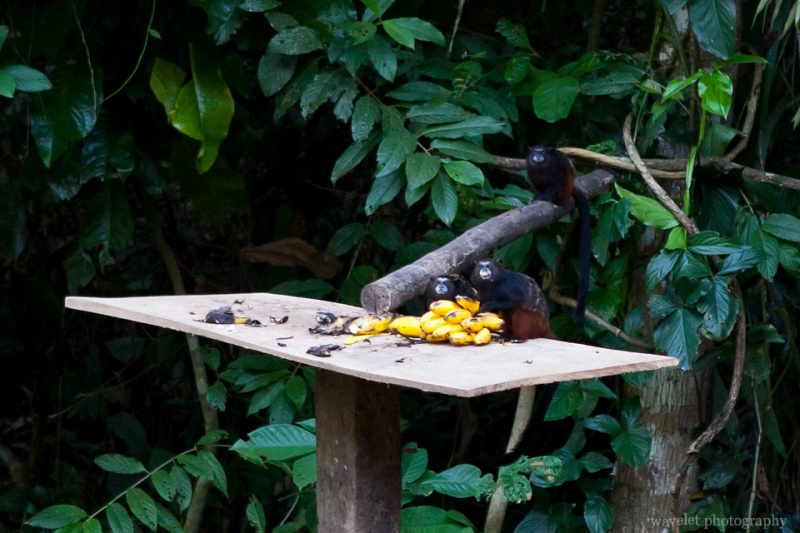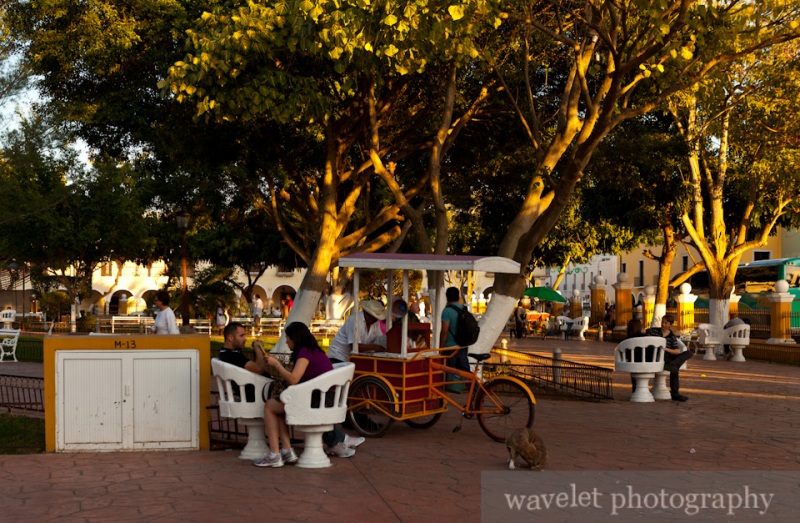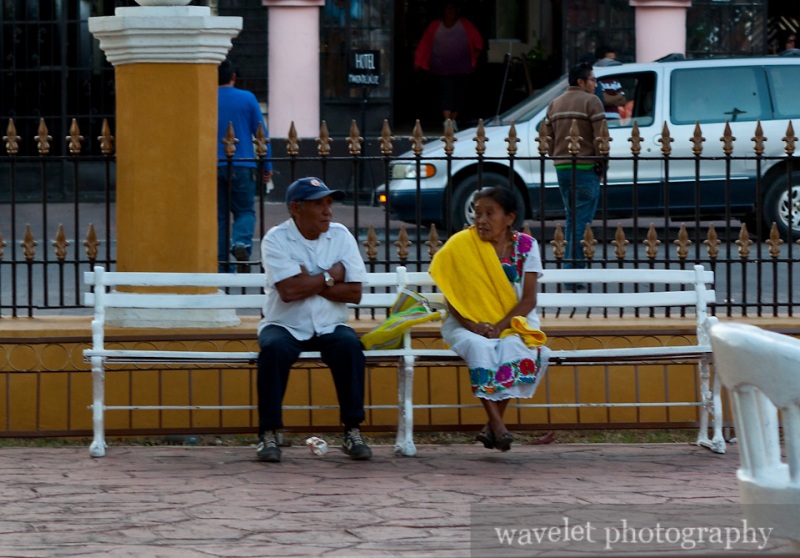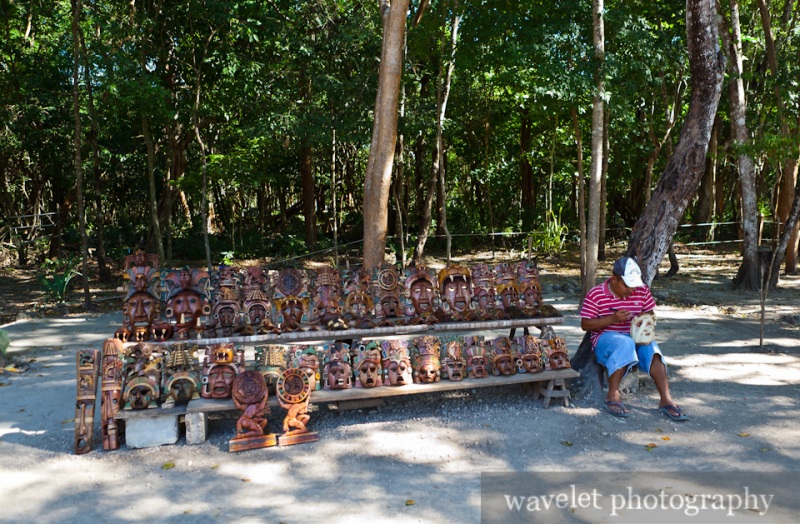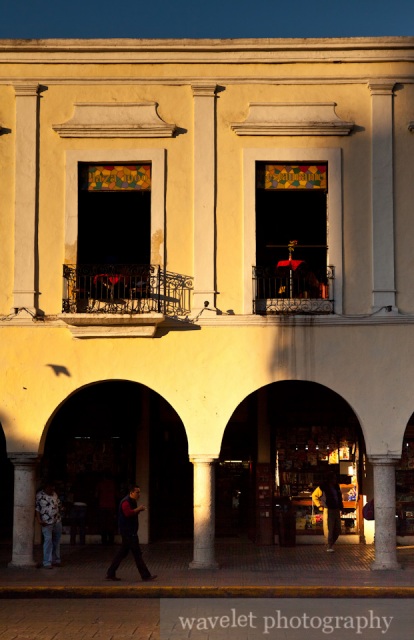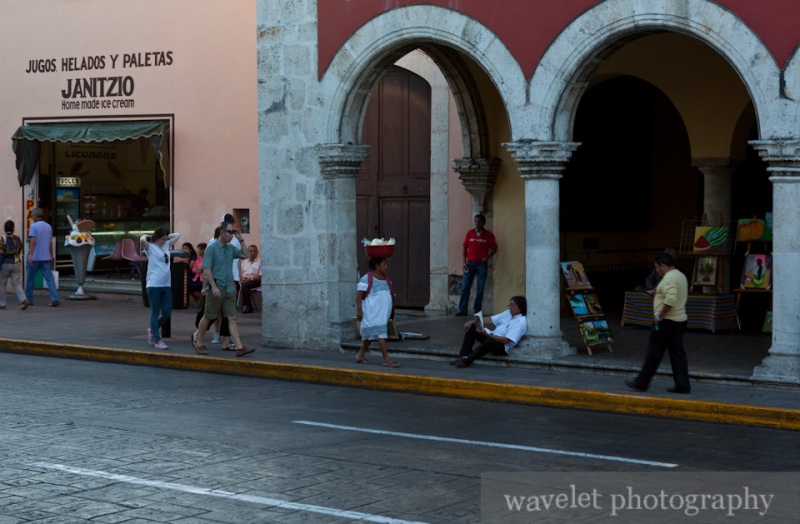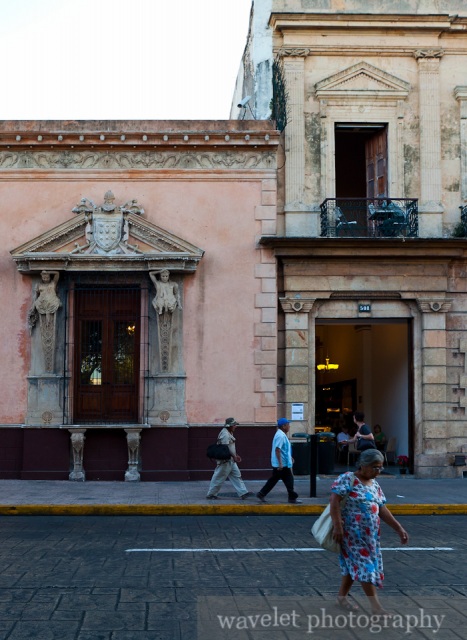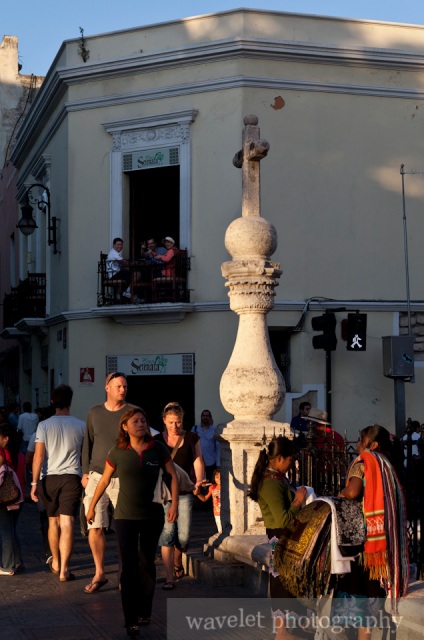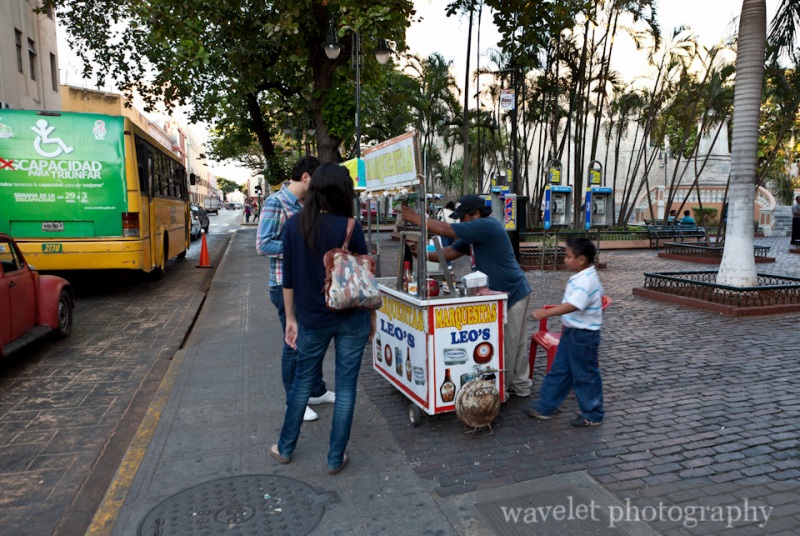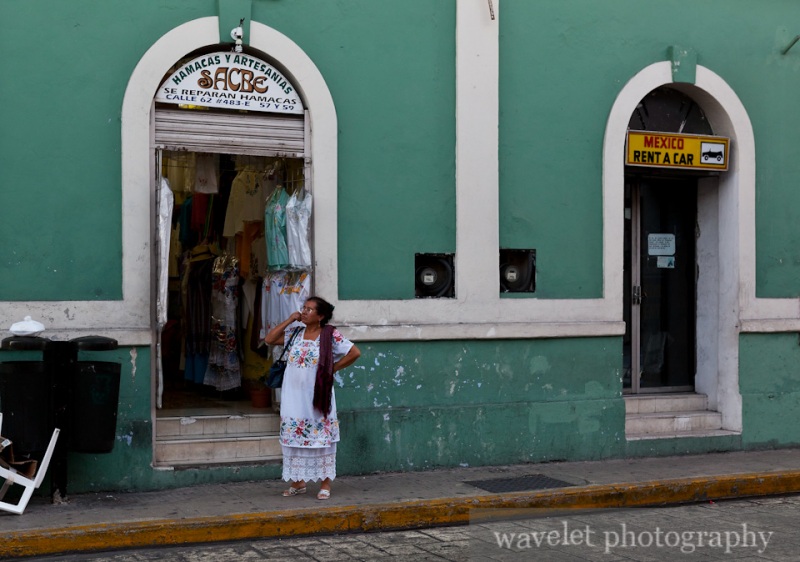2011.7.6After Spanish conquered Inca empire, they stopped at Ollantaytambo without pursuing further deep into the Urubamba Valley. Machu Picchu survived the destruction from the Spanish, but it was also abandoned by Incas and left to nature to reclaim. Machu Picchu became a lost city and only existed in legends for hundreds of years. When Hiram Bingham reached Machu Picchu in 1911, although submerged by centuries of growth, the massive ruin was still well preserved. With the dominating Huayna Picchu forming the backdrop, the spectacular view of the ruin not only makes Machu Picchu one of the most recognizable landmark of South America but also ensured it a position of the New Seven Wonders of the World.
The train arrived at Aguas Calientes, a small town at the foot of Machu Picchu, at around 9pm. We met the person sent by the hotel at the train station and walked 5 minutes to the hotel. The hotel is so close to the train station that I could see our train leaving from the window. The hotel is called Machu Picchu Green Nature. The facility is at its very basic, but it’s tidy and clean enough. We would only stay there for a few hours.

Machu Picchu Green Nature Hotel
To protect Machu Picchu’s cultural and natural environment, in 2005, Peru government set the maximum number of daily visitors at 2,500. This limit is not known to many people. In the last week of July this year, this limit was reached and visitors were turned away. What is more well-known is only 400 people are allowed to climb Huayna Picchu every day. The direct result of this regulation is that anyone who wants to stand on the top of the Young Peak, what Huayna Picchu means literally, has to get up very early to line up at the entrance of the citadel to get the permission.
Buses run every 10 minutes starting from 5:30am to take people to Machu Picchu. It’s the beginning of July, Machu Picchu’s peak season. We have learned that if we really wanted to be one of the first 400, we’d better be at the bus station before 4am. This made us struggled. We didn’t set an alarm, but at 3am I just woke up. I figured that I’d rather getting up to do it than lying on the bed to think about it, so I decided to go by myself and meet my wife later at the citadel. It was dark at the lobby, but the hotel had someone waiting there to open the door for those who were crazy enough like me. The nicest thing was, breakfast was prepared. I had several pieces of ham and fruits and took one banana with me. It’s 4am when I get to the bus station. It’s a queue there!

People waiting for bus to Machu Picchu, Aguas Calientes
I was standing at the end and couldn’t see how long the queue was. Young people in groups passing us by from time to time – instead of taking bus, you can also walk the trail to Machu Picchu. The family who toured Sacred Valley with us the earlier day had warned us that “the trail is steep and no fun”, but I couldn’t stop thinking the possibility that the quota could be all used up by hikers, because I did see at least 30 people passing by in 5 minutes and the bus wouldn’t start in an hour. At last my anxiety took control so I left the queue and joined the hikers. We walked in the valley under stars for about 20 minutes, to my surprise, I saw another queue. The trail starts after crossing a bridge. The gate won’t open until 4:45am.

Queue at the entrance to hike to Macchu Picchu
Everyone was excited when the gate was opened. People hailed and run through the bridge, but this cheer soon faded. All left were the sound of heavy breathing. Machu Picchu is at only 400m above Aguas Calientes, but the trail zigzagged almost directly up to the hill. The stairs seemed endless, and because it’s still dark you could see nothing except the persons in front of you. The worst of all, you don’t want to take to much rest because everyone passing you by could potentially pushing you out of 400-person quota. This is for sure one of the most demanding hikes I’ve ever made, (I am not a person who hikes often), I sware more than once that I would never do this again. At last, at the time when I had to stop every 5 minutes, I saw the light of the sky.
It’s about 5:50am. The queue was already quite long. They were earlier than me for three possible reasons, they hiked faster than me; they took the first one or two buses leaving the station; or they lived in Machu Picchu Sanctuary Lodge Hotel for $900+ per night. The hotel is only steps away from the entrance of Machu Picchu. It charges the premium not because of its facilities but for its optimal location. Even at this price, the rooms are always fully booked well ahead. Machu Picchu opens at 6am. I got my ticket stamped as No. 260. (There is a different line if you don’t plan to climb Huayna Picchu.)

Lines at the Entrance of Macchu Picchu

Machu Picchu Ticket
I didn’t realize that I had to climb to the top of the terraces, the Hut, in order to get the classic postcard shot, instead, I settled at the middle. Finally, I saw Machu Picchu with my own eyes. It’s just like in the pictures – perfect! It’s not dark anymore, but the sun won’t break out from behind of the mountains until 7:20am. The best part of being early is you can enjoy the serenity of Machu Picchu devoid of the tour groups – they usually come after 10am. There were only a couple of hundred people in the site and they soon scattered into the ruin, some of them already started climbing Huayna Picchu as the first batch at 7am. After another 10 minutes or so, the sunshine gradually illuminated the tip of Huayna Picchu, Temple of the Sun and the bottom of the ruin. It is a soul-purifying experience.

Machu Picchu at Sunrise

The Sun has illuminated the whole area at 7:45am

The Terraces and the Hut
My wife and I reunited at 8am. We had two hours to walk around Machu Picchu.

The Temple of the Sun and surrounding mountains

Intihuatana

Sacred Rock

Snow Peaks
When you get the ticket stamped you can choose when to start climbing Huayna Picchu, either at 7am or 10am. The reason I chose 10am was that early morning is the best time to see the ruin before crowds come. At 10am, I came to the trail head at the back of Machu Picchu. I have about two third bottle of water with me.
People waited at the trail head. You are asked to sign your name in before climbing.

Huayna Picchu Trail Head
The trail goes downward first. Huayna Picchu is also called Wayna Picchu. The smaller peak can also be climbed. I almost took the wrong trail at the fork.

Trail Forks before Ascending
Huayna Picchu is about 1100 ft (360m) higher than Machu Picchu. From here, it is all upwards.

Huayna Picchu
The trail contains a lot of switchback. Most part was in the shade. Handrails are provided at steeper sections. It is not dangerous at all. I got tired soon because of the agonizing morning hike, but this time I could take as much rest as I wanted.

Huayna Picchu Trail
The very top of the peak is made by several boulders. There is a small opening in the middle so you can get to the summit.

Small Opening to the Pinnacle of Huayna Picchu
The summit is just a few rocks, but for every square foot, there was someone standing there. You need to be very careful not to lose your feet when moving on these rocks. I believe it was a guide who stood in the center to coordinate visitors and sometimes took pictures for you.

Huayna Picchu Peak
The view was breathtaking, especially the mountains that drop vertically to the Urubamba River and the holistic view of Machu Picchu. The zigzag road is the bus route. The green-roofed construction at the road end is the Sanctuary Lodge. You can see a small trail between the bus route and the ruin. It might be the trail we hiked this morning.

Peaks that Drop to Urubamba River

Overlook Machu Picchu
The most difficult part were all at the beginning of the returning trail. It started with a steep slope that required some hands-feet crawling …

A Steep Slope that Requires Hands-Feet Crawling.
… followed by a flight of dangerous-looking steps …

Another Steep Stairs
… and another very narrow and steep stairs. Hold on tight to one side of the cliff and walk sideways.

Steep Stair close to Peak of Huayna Picchu
After that, the steps merged back to the trail where I came from. Ascending took me a little more than 1 hour and it took me about same amount of time walking down. Overall, it was not a demanding trail, if I had taken the bus in the morning, climbing Huayna Picchu itself wouldn’t be very challenging; but now, when I signed out at the trail head, my legs were shaking. Walking on the flat land had never made me felt better.

Resting after Climbing Huayna Picchu
My wife had been waiting for me at the Caretaker’s Hut. We took some rest and we left Machu Picchu. Sanctuary Lodge Hotel has the buffet lunch. At that time, no matter how much they charged, I would eat there – what I need the most was water. The buffet’s quality was good, the price was reason in American standard.
We took 3:20pm train to leave Aguas Calientes. What we took this time was the Vistadome train. Unlike what people in TripAdvisor said, the it didn’t have more window that the Expedition train we took the day before. It did offer a light dinner and run a fashion show – the crews wearing locally-made clothes and walking through the aisle. Sitting facing to us was an old American couple. The husband is a professor of Duke University. Very well traveled all over the world, they are very good talkers too. We not only shared a lot of travel experiences, but also found out many common traits in travel planning and preferences during the trip. We spent a nice four-hour and when we disembarked the train it’s already dark.

Machu Picchu to Cusco, Vistadome train

Machu Picchu to Cusco, Vistadome train

Dinner on the Vistadome train
Poroy station is quite far from Cusco city. Once we checked into the hotel, we came out to find food to eat. I must say I earned some credit after picking Chicha the earlier night, so we went to try the restaurant that is rated No. 1 in TripAdvisor, Marcelo Batata. It was a total disappointment. It might be a fun place for groups, but the food was …, what can I say, Peruvianized American food. (I’d rather eat Americanized Peruvian dishes.)

Marcelo Batata

Marcelo Batata















